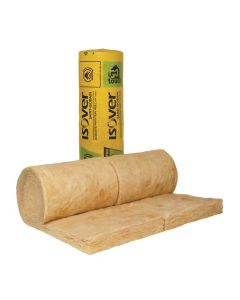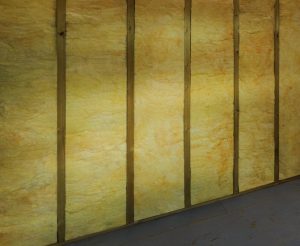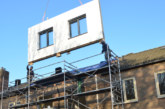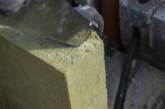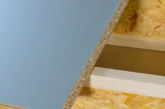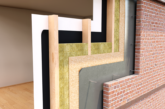
Alun Price, Product Manager from Isover, explores how incorporating acoustic insulation at the specification stage can make a significant improvement in terms of creating a peaceful environment for homeowners.
In the UK, we typically spend around 90% of our time indoors, with much of it being spent in our homes. As such, people are now becoming more interested and concerned with their well-being and how the internal environment effects them. In fact, a survey commissioned by Saint-Gobain UK, revealed that 90% of respondents, buying or moving into a new home, were concerned about the impact their homes would have on their health and well-being – with almost 30% of respondents saying that they would be willing to pay more for a home that enhanced their health and well-being.
The survey also highlighted the top three issues with existing homes, which included high-energy bills, cold homes and nuisance noise from neighbours. And it isn’t surprising that noise is a prominent concern with homeowners – every one wants to enjoy peace and quiet within their homes.
However, with modern families running busy lives and the use of technology increasing throughout households, we are always exposed to noise from one source or another, such as noise from roads, kitchen appliances, TVs or even sound from adjoining properties. According to the World Health Organisation, being exposed to excessive noise can seriously harm human health and interfere with people’s daily activities at school, work and at home.
With this in mind, it is important for housebuilders to up their specification game in order to create a healthy environment. Indeed, how a home sounds is every bit as important as how it looks!
Acoustic benefits
Incorporating high quality acoustic insulation solutions at the specification stage will not only provide the future homeowners with benefits, but it will also greatly benefit the housebuilder or developer. For homeowners, it will improve their general well being, allow everyone to enjoy their home to the full and provide better sound control for today’s hectic lifestyles. And for housebuilders, they will be able to differentiate themselves in the market, as the homes will be built to a superior quality and customer satisfaction will be improved greatly.
In England and Wales, acoustic performance is covered by Approved Document E of the Building Regulations, which stipulates the minimum standards for sound reduction and absorption qualities in homes and schools. For example, the minimum requirement for separating walls between new dwellings is to reduce airborne sound by 45dB. With this level of sound insulation people would strain to hear loud speech in the neighbouring property. However, there are products available on the market, which can help to exceed these standards to ensure a higher quality build.
Specifying glass mineral wool can significantly improve the acoustics of a building and can help housebuilders surpass Building Regulations, if specified correctly – all the while contributing to the thermal performance of the property. Glass mineral wool offers a range of benefits; it is lightweight, easy to install, non-combustible, sustainable, provides effective thermal performance and most importantly it absorbs sound and drastically reduces the transfer of noise.
There are many glass mineral wool solutions available on the market, which have been designed for the different applications within a home. For example, for masonry separating walls it is recommended that a glass mineral wool roll, such as Isover’s RD Party Wall Roll, is specified. Products such as this are compliant with many of the generic Robust Detail specifications and furthermore, Isover’s most current proprietary Robust Detail specifications offer sound reduction of at least 5dB better than those required by Approved Document E, whilst providing the best possible level of thermal performance (i.e. a U-value of 0) within Approved Document L of the Building Regulations (The conservation of fuel and power).
Internal walls
When it comes to internal walls, the most effective way to combat the transfer of noise is to build a lightweight partition (either timber or metal stud), consisting of two sheets of plasterboard with a layer of acoustic insulation, such as Isover APR 1200, sandwiched in between.
Although the Building Regulations state that a requirement of 40dB is mandatory, by using a mass-spring-mass partition construction it is easy for housebuilders and developers to increase this to 45dB or even 50dB (where loud speech cannot be heard between rooms). Achieving these high levels of sound reduction will positively impact how the end users will use their home in the future, allowing them to do the things they want to do without disturbing others.
Internal floors
For internal floors an acoustic glass mineral wool insulation, such as Isover APR 1200, is also recommended to enhance sound absorption within the floor/ceiling void, in order to achieve the minimum airborne sound insulation performance (40dB) required by Approved Document E. Currently, there is no regulation for impact sound for internal floors, but for enhancing the acoustic comfort within homes, housebuilders are encouraged to consider ways to maximise both the airborne and impact noise performance of internal floors as well.
For more information visit www.isover.co.uk or for further information about its ‘Sound Good Factor’, visit www.soundgoodfactor.co.uk

